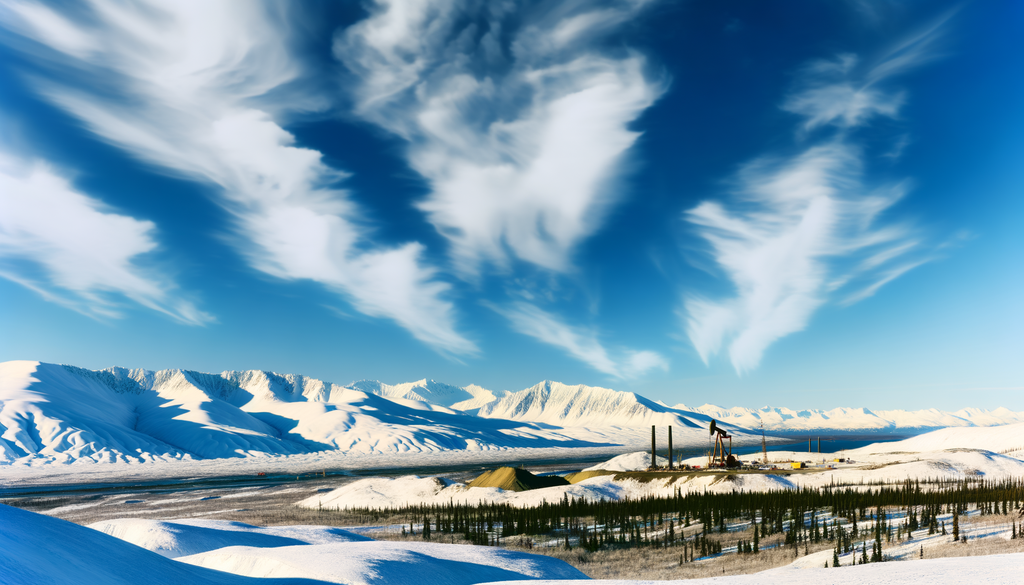Navigating the Complexities of Trump Officials Opening Millions of Acres in Alaska to Drilling
Teknologam Sdn Bhd keeps a close eye on evolving policies that impact the global oil and gas industry. The recent move by Trump officials to open millions of acres in Alaska to drilling represents a significant shift with wide-reaching implications. Understanding these developments helps us anticipate changes in resource availability, environmental considerations, and geopolitical dynamics shaping our sector.
Key Takeaways
- The Trump administration’s aggressive plan opens vast Alaskan territories for oil and gas exploration, signaling a focus on energy independence.
- Technological challenges and environmental safeguards will heavily influence the feasibility and pace of drilling operations in the Arctic region.
- Public opinion and regulatory pushback remain significant hurdles, potentially shaping long-term sustainability and reputational risk factors for industry players.
Trump’s First Day Actions on Alaska: Drill, Deny, Destroy?
On his first day in office, Trump's administration quickly reversed previous protections by announcing plans to open millions of acres in Alaska to oil and gas drilling. This policy shift aimed to deliver on the “drill, baby, drill” campaign promise, prioritizing domestic energy production and economic growth.
However, the vast Alaskan wilderness poses considerable technical and ecological challenges. Drilling in the Arctic requires advanced technologies to mitigate risks like oil spills, pipeline integrity in permafrost, and minimizing the impact on vulnerable ecosystems. Teknologam recognizes the need for innovative solutions to balance energy development with environmental stewardship. For insight into the potential ecological impacts, visit this National Geographic article on Arctic drilling.
- Opening millions of acres in Alaska increases potential output but raises complex operational demands.
- Infrastructure and seasonal constraints significantly affect drilling schedules and costs.
- Enhanced monitoring and risk management systems become critical in fragile Arctic environments.
The Well of Public Opinion Is Drying Up: Why “Drill, Baby, Drill” Is Not as Easy as It Seems
Despite political motives to expand drilling, the well of public opinion shows increasing concern about long-term environmental impacts. Indigenous communities, environmental groups, and some policymakers question the wisdom of unrestricted access to sensitive Arctic landscapes. Moreover, the global energy transition toward renewables complicates long-term demand forecasts for fossil fuels.
From an industry perspective, the phrase “drill, baby, drill” risks oversimplifying the complex interplay between resource extraction, social license to operate, and regulatory compliance. Teknologam views this tension as a call to innovate responsibly, integrating sustainable practices with traditional oil and gas expertise.
“Opening land to drilling fuels growth but demands accountability—not just in words, but in how we operate daily,” says a Teknologam senior engineer.
Key Insight: Industry leaders must innovate to align drilling practices with evolving environmental standards to sustain public trust and market relevance.
Trump Administration’s Plans to Open Millions of Acres: Industry and Environmental Implications
The decision to unlock vast Alaskan territory for oil and gas exploitation carries strategic importance. For the industry, it means access to potentially massive reserves, promising new investment opportunities and revenue streams. However, it places a spotlight on the necessity for rigorous environmental impact assessments and deployment of cutting-edge drilling technologies.
Teknologam monitors the regulatory environment closely, noting that infrastructure development in such remote locations demands high operational efficiency and robust safety protocols. Additionally, companies must prepare for escalated scrutiny from local stakeholders and international observers concerned about Arctic preservation. To understand the technological advancements in this field, check out this report on drilling technologies in Arctic regions.
- Strategic resource access can bolster supply chains and geopolitical positioning.
- Industry must deploy advanced drilling technologies to mitigate environmental and operational risks.
- Public and governmental opposition may influence permit approvals and project timelines.
Trump’s Vow to “Drill, Baby, Drill” Is Hitting Alaska’s Arctic Frontier Hard
Expanding drilling activities in Alaska's Arctic frontier comes with a complex web of challenges. Harsh weather, fragile ecosystems, regulatory unpredictability, and rising public skepticism create a difficult operating environment. Despite the promise of abundant oil and gas reserves, companies, including Teknologam, recognize that success depends on collaboration with environmental agencies and indigenous groups.
The evolving policy landscape requires balancing drilling ambitions with sustainability goals. As the administration pushes forward, industry stakeholders must weigh short-term gains against long-term impacts, ensuring technology advancements lead to responsible energy development.
Key Insight: The future of Arctic drilling lies in harmonizing political aspirations with technological innovation and environmental responsibility to safeguard both energy security and the planet.
Teknologam remains committed to monitoring these developments and advancing solutions that address the unique challenges of drilling in Alaska. Our industry must adapt to shifting socio-political dynamics while leading in responsible resource development for decades to come.
